SAFE AND SOUND
An emergency response pilot program in Peel Region, legal cases give lessons on condo security, and a camera tech Q&A


The 10th Annual Who's Who
A ranking of the Canadian condo industry’s major players and portfolios.


An emergency response pilot program in Peel Region, legal cases give lessons on condo security, and a camera tech Q&A


The 10th Annual Who's Who
A ranking of the Canadian condo industry’s major players and portfolios.

Trusted for over 65 years, we are your proven performer within the Condominium Property Managers and Commercial Real Estate Market. We’re proud to be your premium choice, full-service exterior contractor for large municipal, industrial/commercial, and private projects.
EXPERIENCE. LOYALTY. QUALITY. DEPENDABILITY.
Pacific Paving Ltd. 5845 Luke Road, Unit 204 Mississauga, ON L4W 2K5 T (905) 670-7730 F (905) 670-7631 info@pacificpaving.ca pacificpaving.ca
ASPHALT PAVING | CONCRETE WORKS | WATERMAIN REPAIRS
CIVIL WORKS | BUILDING RESTORATION SERVICES | 24 HOUR EMERGENCY SERVICES







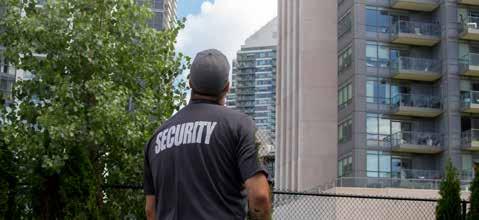


In a recent conversation with a property manager, I learned how much more empowered residents feel when they understand what to do before and during an emergency.
This is one element we touch upon in our security and technology issue. The intricate connection between those two topics is the focus of several articles. One piece looks at a new innovation for high-rise buildings that Peel Regional Police has been piloting. The technology redefines emergency response by giving first-responders immediate access control and proactive information that is unique to the building.
See page 28 for more.
Turning to the law, after fielding various questions about security cameras over the past year, a condo lawyer shares advice on page 32.
And speaking of cameras, they figure into key takeaways from a recent court case involving a disruptive resident, the details of which can be found on page 36. Another important lesson from that case involves resident education, which is also a crucial element of fire safety. We look at how to empower owners with knowledge about their own critical role during a fire event.
There is always so much to learn about condo living. If you haven’t already heard, there is a new book for Ontario-based owners that answers more than 50 questions for condo newcomers and long-time residents. The book will likely help foster that feeling of empowerment. Check out the New & Notable section for more.
Wishing you a happy and safe summer,
Rebecca Melnyk Editor, CondoBusiness rebeccam@mediaedge.ca
Editor Rebecca Melnyk
Advertising Sales
Jake Blanchard, Sean Foley, Ron Guerra, Melissa Valentini
Art Director
Annette Carlucci
Graphic Designer
Roxy Huynh-Guinane
Production Coordinator Ines Louis
Contributing Writers
Brandon Cariño, Luis A. Hernandez, Sonja Hodis, Mark D. Hopkins, Quintin Johnstone, Ingrid Kulik, and Rachel Puma.
Digital Media Director
Steven Chester
Subscription Rates
Canada: 1 year, $30*; 2 years, $55*
Single Copy Sales: Canada: $10*. Elsewhere: $12 USA: $85
International: $110 *Plus applicable taxes
Reprints: Requests for permission to reprint any portion of this magazine should be sent to info@mediaedge.ca.
Circulation Department
Adrian Holland circulation@mediaedge.ca
CONDOBUSINESS is published four times a year by
President Kevin Brown
Director & Group Publisher
Sean Foley
Accounting Manager Michele Therien
2001 Sheppard Avenue East Suite 500 Toronto, Ontario M2J 4Z8 (416) 512-8186 Fax: (416) 512-8344 e-mail: info@mediaedge.ca
CONDOBUSINESS welcomes letters but accepts no responsibility for unsolicited manuscripts or photographs.
Canadian Publications Mail Product Sales Agreement No. 40063056 ISSN 0849-6714 All contents copyright MediaEdge Communications Inc. Printed in Canada on recycled paper.
/condomediaedge /condobusiness /condomediaedge




































Research findings identify security and energy management functions as key selling features of smart home technology, but a sizable share of prospective adopters have concerns about data privacy and system cost. Responses from more than 800 homeowners and residential renters throughout Canada and the United States, surveyed for the Association for Smarter Homes & Buildings’ (ASHB) annual research project, serve up a profile of consumers’ attitudes and where barriers to the uptake of smart technologies are occurring.
More than 70 per cent of survey respondents already have some form of smart technology within their homes, with Amazon Alexa or Google Home frequently identified at the core of those networks. About threequarters of respondents say they are open to artificial intelligence applications if they deliver a perceived benefit and come with transparency about how personal data will be used. The remaining 23 per cent are characterized as “wary and skeptical” about sharing data.
The report’s executive summary points to an “intriguingly fragmented” consumer perspective on smart home technology, including generational differences in both pace of adoption and preferred applications. Current or prospective adopters rank security, energy efficiency and preventative maintenance as leading potential benefits, while a smaller segment of respondents reported interest in personalized advertising.
Drawing conclusions from survey responses, the report’s authors suggest consumers’ interest in preventative maintenance and energy consumption analysis could help make the case for data sharing, as users appreciate the role it plays in enabling devices to identify patterns that lead to performance improvements and/or preemptively identifying and rectifying issues. However, “transparency and segmented data utilization approaches” are deemed essential to build consumers’ confidence. 1



Embracing smart technology
Security and lock systems in multiresidential properties are undergoing a gradual but dynamic transformation. Keyed-mechanical locks are being phased out in favour of credentialedelectronic locksets and connected access control systems, driven by technological advancements and the increasing demand for enhanced security and a better resident experience.
BY BRANDON CARIÑO

often associated with mechanical keys. The resident experience becomes more convenient, helping with retention and improved occupancy rates.
Smart locks offer remote access, mobile integration, and enhanced monitoring capabilities, providing higher security and convenience than traditional mechanical locks.
Rise of mobile access control With most adults having smartphones, mobile access control is becoming increasingly common. It offers a more secure and convenient way to access various parts of the property, while helping to differentiate a condo and attract high-quality residents.
Given the many options on the market, it helps to understand what is best for a property and grasp knowledge about how these systems are evolving.
The shift from traditional keyed-mechanical locks to credentialed-electronic locks marks a significant advancement in property security. Younger generations who have been introduced to mobile credentials at post-secondary schools and office settings will likely drive more demand for this access. Electronic access control and smart locks provide more visibility and control over who enters spaces and help lessen or eliminate the key management burden. Smart credentials, on the other hand, remove the need to re-key locks, offer stronger security features and mitigate risks


Prospective security system purchasers in Manitoba can subtract $300 from the price now that the provincial government is delivering on an election campaign promise to provide rebates to businesses and residential dwellers. Manitoba’s Finance Minister, Adrien Sala, confirmed the measure yesterday as he tabled the 2024 provincial budget, boasting that it was one of “21 new ways to save” that he was unveiling.
“Manitobans can purchase, or install, a home or business security system of their choice, and then apply to the government for a consumer refund of up to $300 — it’s that easy,” the budget document states.
For now, there are few details of either how the rebate will be administered or the total amount of funding available. During last year’s election campaign the NDP platform promised $2.5 million for the scheme. Within the 2024 budget document, the rebate is identified as part of the government’s public safety strategy, while elsewhere in the document, it’s noted that $6.3 million has been earmarked for “implementation of the public safety strategy with a focus on youth crime prevention”.
The entire move-in process can also be contactless, with mobile keys emailed to future residents for downloading.
Integration with proptech
Proptech has significantly impacted the way people live, work and play. As future owners seek out affordable homes close to coveted school zones, they are also conveying a prefer-
ence for smart locks, resident portals and cameras. A condo’s unique needs can be optimized through proptech consolidation, which can provide solutions that are flexible, scalable and tailored to the property, while offering data insights that help understand residents’ behaviours, make improvements or proactively address a condo community’s needs.

With
Visitor management systems and self-guided tour technologies are other benefits that can help streamline operations and enhance the resident experience. Property managers can track visitors and provide prospective owners with a flexible touring experience.
Moving forward
Future trends in access control include integrating cutting-edge technologies, such as ultra-wideband, for seamless, location-based access.
While the upfront costs for electronic access control may be higher than a traditional keyed mechanical system, the longer-term operational efficiencies have more properties getting comfortable with the investment. The potential for enhancing property security, improving net operating income, and boosting resident experience through advanced technology is boundless. 1
Brandon Cariño is the senior marketing manager of Allegion Canada Inc.
The consumer preferences stated in this article were extracted from Allegion’s 2023 Multifamily Living Trends Report, which analyzed online responses from among 1,009 people who currently rent or own a multifamily residence or plan to in the next two years. The goal was to understand what they desire, expect and will pay more for. The respondents did not work in security manufacturing, security, market research, access control, or multifamily real estate.










Looking for a reliable partner to help bring your building project to life?



Look no further than Egis, formerly known as McIntosh Perry. With a staff of over 600 professionals and technical experts, we offer a comprehensive range of consulting engineering and technical solutions that cover all stages of a building project. From concept to completion, we work with you every step of the way to turn your possibilities into reality.





Trust Egis to help you achieve your building g oals with our full range of services for the building industry.




















In the dynamic world of high-rise and commercial janitorial services, where pristine cleanliness is paramount, WhiteRose Janitorial stands as a beacon of excellence. Since our inception in 1986, we have committed ourselves to delivering top-tier cleaning services while fostering a professional and compassionate work environment.
At WhiteRose Janitorial, we recognize that each building has unique needs and demands. Our bespoke cleaning schedules are meticulously tailored to
meet these specific requirements, ensuring clients receive precisely the level of service they need without unnecessary sta ng or costs. This customized approach optimizes resource allocation, enhancing e ciency and guaranteeing superior cleanliness and attention to detail.
Our innovative practices set us apart in the industry. WhiteRose Janitorial utilizes advanced cleaning systems to prevent cross-contamination, ensuring a safe and hygienic environment for all. Our rigorous three-tier management supervision ensures strict adherence to schedules and maintains the highest standards of quality across all our services.
Upon initiating our services in a new property, our commitment to thoroughness becomes immediately apparent. We conduct comprehensive cleaning assessments, meticulously reviewing every corner of the property, including often overlooked areas such as electrical closets, storage rooms, and mechanical rooms. Our dedication to excellence extends to high-tra c areas such as lobbies, where our detailed cleaning routines ensure these spaces remain immaculate.
WhiteRose Janitorial values and supports our sta ’s dedication and adaptability. Our structured sta ng levels promote a clear chain of command, enhancing e ciency and cohesion within our teams. Regular inspections by area managers, coupled with open communication with cleaning sta , ensure consistently high standards of cleanliness. Our performance-based
incentive program for management rewards excellence based on client-centric metrics, such as site inspections, health and safety measures, and client satisfaction scores.
Beyond our commitment to quality service, WhiteRose Janitorial is dedicated to making a positive impact in the community. We proudly sponsor a room at the Ronald McDonald House for Toronto’s Hospital for Sick Children. Our sta generously donates their time and resources, volunteering and serving food at the Ronald McDonald House, making a meaningful di erence in the lives of families in need.
Despite our superior cleaning services and continuous investments in innovation, WhiteRose Janitorial remains competitively priced. Our proactive approach and attention to detail ensure tasks are e ciently allocated, delivering impeccable results and reducing overall costs for our clients.
The foundation of WhiteRose Janitorial’s success lies in building valuable and reciprocal relationships. Our
dedication to exceptional service and community initiatives sets us apart in the industry. For a cleaning company that goes beyond the ordinary, o ering competitive pricing and unparalleled service, WhiteRose Janitorial is the perfect choice to elevate your property’s cleanliness and operational e ciency.
Discover how a structured cleaning schedule can transform your property. Contact WhiteRose Janitorial today for a complimentary white-glove inspection of your facility v visiting www.whiterosejanitorial.com
Experience the di erence of a truly professional janitorial service.






WhiteRose Janitorial doesn’t just clean; we elevate your environment to new standards of excellence.



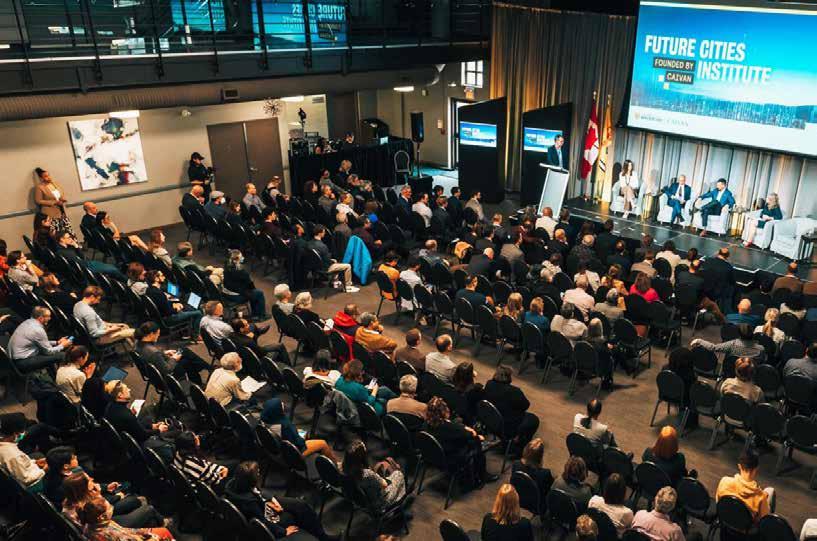
As Canada struggles through a housing affordability crisis, a new institute is attempting to find innovative solutions that help solve this pressing issue.
The new Future Cities Institute (FCI) aims to tackle the systemic drivers of housingrelated affordability and develop innovative approaches for designing and building residential dwellings.
The University of Waterloo and Ontario land development and homebuilding company The Caivan Group launched FCI this past spring as an interdisciplinary hub housed within the Faculty of Environment. Caivan committed $10 million to the feat. Its CEOs and Co-Founders, Frank Cairo and Troy van Haastrecht, are both alumni.
Growth management tools to support municipal decision-making are one of the early
research priorities. Data-supported toolkits could allow policy makers and developers to visualize potential scenarios and target outcomes with the assistance of technology, like generative design tools.
Various faculties at the school will help inform evidence-based decisions for city building and urban policy primarily in Ontario. Solutions might even be shared across Canada and globally.
“One of the big technological synergies we’re hoping to really tap into relates to big data and AI modeling,” says Cairo. “For example, envision a municipality having access to a tool, which will allow a full
BY REBECCA MELNYK
examination of housing potential within a region.”
Dashboards could help municipalities quickly understand the expected dwelling units over the next two to three years in an application pipeline, the state of affordability in an existing municipal region, how prices rise and fall based on the pipeline of new inventory, and potential incentives or targets municipalities should focus on to ensure the housing stock represents what is best for a region’s overall prosperity; for instance, access to housing and attracting new employers.
“A lot of the tools needed to make better decisions about housing and land inventory and


planning policy really aren’t there,” Cairo says. “We hope, as an institute, to help develop a better tool kit to assist in the process and hopefully improve affordability across the country.”
By 2030, more than half—one million of 1.9 million—new households will not be able to buy a home, according to a spring RBC Economics report, The Great Rebuild. Only 45 per
cent will have enough income to afford a condo and a smaller 26 per cent will be able to buy a single-detached home at today’s prices and interest rates.
There is also an ongoing drought of skilled labour. Earlier this year, BuildForce Canada also found a recruiting gap of more than 85,000 construction workers by 2033. There is a pro-
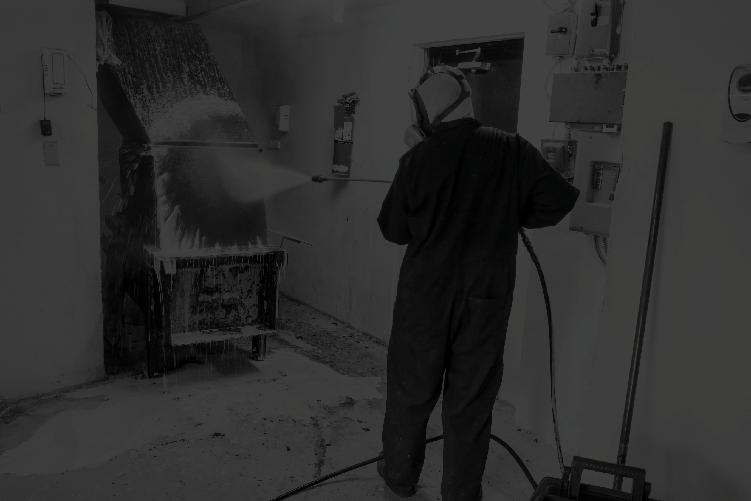
“There is a multi-faceted requirement needed to really get productive at building things again.”
ductivity shortfall, Cairo observes, even if land supply and approval entitlements were no longer constraints.
“Undoubtedly, supply is the biggest thing to tackle, but if we shift gears into other realms, I would say scale is a huge area of focus,” he notes. “How do we scale up supply chains and the horsepower needed to build more, harnessing things like advanced manufacturing, robotics, immigration policy, training sessions, and a greater focus in schools around skilled trades? There is a multi-faceted requirement needed to really get productive at building things again.”
These are just a few areas the FCI will delve into while finding real-world solutions alongside STEM expertise the university is lauded for.
“There are these wonderful partnerships
we’re building now between a variety of faculties where experts who have never worked in urban challenges are now turning their focus and research efforts from other technical fields into solutions related to housing, environmental sustainability, and social injustice,” says Cairo.
“These are areas where, typically, you didn’t have STEM connections.”
Earlier this year, FCI director Leia Minaker commended the partnership. She is also an associate professor in the School of Planning. “Future Cities will explore the trends, innovations, and technological disruptions to help us craft policies and practices that better anticipate change,” she said.
“To do that, academics and planners need to work directly with the people and companies who are on the ground day-to-day building cit-
At Crossbridge, we consistently strive to provide the best possible service to owners and residents alike. As the leading condominium property manager in Ontario, our experienced team focuses on your needs and offers industry-best practices that help to promote operational efficiency and long-term satisfaction. Great condominium communities don’t just happen on their own. Let our team help.
ies, developing new technology, and making consequential decisions.”
The institute is rooted in the school’s Future Cities Initiative that was launched in 2022. The initiative features specialized training and learning opportunities through undergraduate and graduate education.
“We hope that the partnership with the University of Waterloo and the Future Cities Institute is really just the beginning of many partnerships,” says Cairo.
“One of the things we are very hopeful for is finding partners across a variety of sectors to engage with the institute, so we can bring the horsepower and expertise of academics across a variety of faculties into a room with the industry frontline to really target a new generation of solutions.” 1


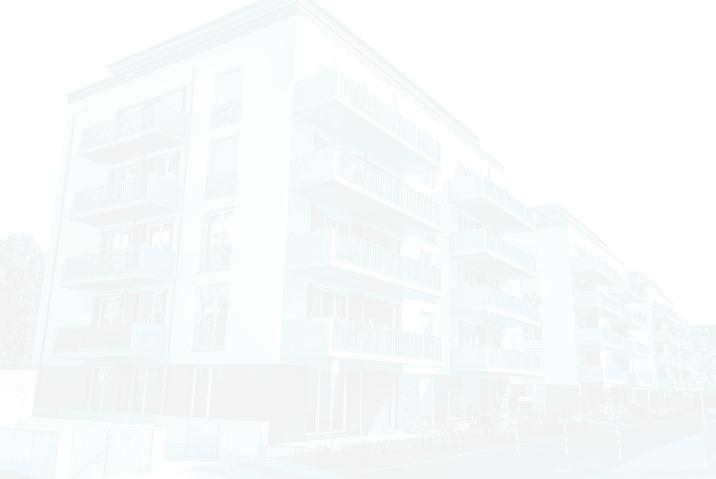

Having the technical expertise and insight to conduct retrofit projects in established buildings without affecting the day-to-day business of occupants is our specialty. It’s what sets us apart.
The truth is, existing buildings are far more complex and challenging than new construction, and require a unique game plan every time. It’s why the process for delivering mechanical and electrical engineering solutions requires more than a cookie cutter approach – it demands that you have a deep insight into the building and how new systems can be integrated into existing systems seamlessly. All of our projects are reviewed by senior engineers, each with over 30 years of experience in their respective fields, ensuring that our clients always receive engineering services of the highest quality.
T: 416-443-9499 | E: marketing@mcgregor-allsop.com mcgregor-allsop.com
















When laying the groundwork for his inaugural business, Domenic Gurreri knew choosing the right name was crucial.
It was 1994, and as a civil engineering student, Domenic had secured some contracting completing interlock and soft landscaping work for residential clientele. With the positive responses he received, he soon realized it was something he could build a successful career on. To reflect his vision of rejuvenation and growth, Domenic landed on “Forest Contractors” for his company name, laying the foundation for a growing entrepreneurial pursuit.
Domenic knew owning his own business was going to be tough—at least at first—but he was familiar with commitment. His Italian father had instilled the ethos of dedication and commitment into him from an early age, and his summers were spent working for the family business, a janitorial company. Although Domenic had no direct connection to the construction industry, many of his friends did. He was fascinated by the processes involved with construction and, through some contacts, was able to take his first steps towards working in the industry.
He soon found that much of his profit was eaten up by the cost and delay of using equipment rentals. To be competitive, he knew he needed to own the machinery outright. While still a student at Toronto’s George Brown College, he made arrangements for a bank loan. He was quickly denied—in fact, the bank manager laughed at him—but undeterred, Domenic returned with the backing of his parents who agreed to act as co-signers.
With the money in his pocket, the company acquired key pieces of machinery including a Combination Roller, a piece of equipment used for compacting asphalt. The machine was not yet being used by competitors in a patch and repair setting and was considered an innovative move in the commercial and industrial sector. Fun fact: you can find the Combination Roller displayed in the second-floor foyer at the Forest Group head o ce. Along with the Combination Roller, Domenic acquired a dump truck, doolies, back hoes, mini excavators, skid steers, rollers, small spreader, and a trailer to move the equipment from one job to another. Just two years into their inception, Forest now could take on a larger volume of jobs and move into the commercial industrial arena. They now had the control over quality needed to ensure seamless project completion.
In those first years, every dollar earned was put back into the business to allow it to establish itself and grow. And it grew considerably.
In 1997, Forest Contractors Ltd. found its first o ce location with an attached shop. In 2004, he owned his first o ce facility with a yard, and in 2012, Forest opened their own asphalt plant strategically located at the junction of two major highways to conveniently serve customers across the GTA and beyond. With five storage silos for various hot-mix asphalt types and updates made to the acquired asphalt plant facility, Forest Paving Ltd. was born, marking the beginning of the Forest Group! In 2017, Forest winterized the asphalt plant, allowing the plant to produced hot-mix asphalt all year round for our clients.

Now aligned with their own asphalt plant, Forest Group were able to be more competitive on municipal projects. Forest was able to successfully bid and work with municipalities by providing low and competitive pricing to clients and was not only able to supply itself with high quality asphalt but serve as a supplier to other asphalt companies. The asphalt plant also serves as a recycling division, whereby waste concrete is crushed and reused as a gravel base approved by MTO standards.
In 2015, Forest acquired A. Wesley Paving Ltd., further expanding their capabilities in providing high-quality paving and asphalt services.
With over three decades of experience, Forest Group employs over 250 dedicated professionals and maintains a fleet of over 450 machines. Forest Group has headquarters in Vaughan, a paving division in Concord, and equipment yards in both Brampton and Burlington. With an emphasis on sustainability and resource management, Forest has earned the trust of top-tier clients including Canadian Tire, Rogers, CIBC, York University and CN Rail, along with many other satisfied clienteles.
Mix
It doesn’t stop there. Forest has been recognized as a Platinum Club member of Canada’s Best Managed Companies and has been the recipient of numerous awards including the Vaughan Business Achievement Award, ICCO Business Excellence Awards, and the BOMA Canada Pinnacle Award promoting service excellence in the Commercial Real Estate Industry.
Forest Group continues to expand and grow. Recently, the company introduced the SmoothRide solution to Ontario. Originally engineered for large road and highway paving, Forest Contractors Ltd. have adopted the technology for use in parking lot paving. SmoothRide enhances the removal of old asphalt, significantly minimizing the disposal of millings and reducing the use of excess asphalt. This approach extends the asphalt’s lifespan, eliminates deficiencies, and optimizes e ciency, resulting in less overall waste per project. The SmoothRide solution is an environmentally responsible option for property owners who value sustainability and cost savings.
As they did years before by using the Combination Roller, Forest Group have once more proved themselves as initiators of innovative technology in the paving and asphalt industry.
from the past three decades. Domenic and his team recognize that the unwavering support of their employees, clients, partners and community are the backbone of Forest’s continued success. The anniversary celebration was an incredible evening that reignited the flame of future ambitions, and gratitude for past achievements.
Specializing in asphalt paving and concrete construction, the Forest Group o er extensive and diverse services and solutions for initial construction, maintenance and repair. Results-driven and client-focused, Forest Group builds strong, sustainable foundations to protect our client’s investment for today and for the future.
To book a visit with a site representative, or to find out more, please contact 416-951-2159 or visit www.forestgroup.ca
Forest Ready Mix provides premium concrete mixes direct
the company’s core values

In 2023, the company expanded further with the introduction of Forest Ready Mix to the group of companies. Forest Ready Mix provides premium concrete mixes direct to customers and upholds the company’s core values of excellence and innovation.







Forest Group recently celebrated their thirty years of service with family, friends, and clients in Vaughan, sharing many success stories













A knowledge gap prompts fire safety education for condo residents.
The number of fires in high-rise buildings increased by 10 per cent last year, according to the latest statistics from The Ontario Fire Marshal. The province also saw the total number of fatal fires rise to 109. Within many condos, there is a critical gap between fire safety and resident knowledge.
Rightnow, residential building managers, superintendents and security staff all require training under the Ontario Fire Code,” says Jason Reid of National Life Safety Group. “However, the deaths and injuries are not occurring to them; they are impacting the residents—the only ones in a high-rise building who are not required to be familiar with their own unique roles and responsibilities.”
In the case of a fire alarm, a common belief before evacuating is to wait for advice from the security guard or for the fire department to arrive. “No where in the official emergency procedures does it say that security guards should help people out of the building and provide guidance to those who are phoning in,” says Reid.
Rather, they have a critical responsibility to go to the fire alarm panel, call 911, speak to the operator, make an announcement over the emergency voice communication system, go to fire safety plan box to get the plan, keys, a copy of floor plans and list of disabled people in the building, and then hand it to the fire department when they arrive.
Brent Brooks, acting Captain with Toronto Fire Services and specialist at High Rise Firefighting,
says nuisance alarms have also caused complacency. “On average, it takes us 6 minutes to get to your place, and our vertical response time can take another 6 minutes on average. So, we really can’t help you until after 12 minutes of that first alarm going off.”
Residents have moments to decide whether to evacuate or shelter in place. “Once that building is filled with smoke, you can’t leave,” he warns.
Once the fire department does arrive, there needs to be a representative on-site who knows the building intimately, such as what stairwell leads to the roof. “In Canada, commercial properties have fire wardens, but there aren’t really any for residential, other than what the superintendent does—if they are on site,” he says.
“Sometimes we get there, the alarm is going off, and they are not on site. That has its own layers of issues.”
Other gaps he flags are units with missing or damaged automatic door closers, which causes smoke-filled hallways. Charging electric scooters and bikes near emergency exits
is a newer, yet common issue facing condos right now. He describes a recent event where a woman was trapped on her balcony. Her scooter caught on fire as it was charging inside her unit and blocking her exit.
While fire safety procedures are primarily found in a condo's welcome package, the details largely go unread, explains Reid, who conducts resident education sessions for condo corporations across the province, which delve into all the roles and responsibilities of staff and residents.
Jennifer Lawther, a property manager with Whitehill Residential, oversees a condo in Mississauga where these sessions were piloted and continue annually. The 300-unit building is a tight-knit community, mostly consisting of seniors, with 50 persons requiring assistance.
“The residents walk away feeling more empowered about what to do during an emergency,” she says of the session. “They meet people they haven't met before and it also creates a greater sense of community.”






We don’t just smear paint unto a substrate, we go beyond that and even more. We apply invaluable decorating principles stemming from over 40 years of industry experience
• Exterior high-rise: painting, pressure washing, caulking, concrete repairs, waterproofing and stucco
• Interior and exterior painting including spray applications
• Parking garage painting and repairs
• Epoxy coatings
• Balcony slab waterproofing
• Concrete repairs
• Exterior stucco/EIFS applications
• Caulking
• Murals, faux finishes
• Wallpaper installation and repairs
• Corridor & lobby renovations including painting, tiling, carpeting, trim work, electrical, etc.
CLEAN CUT PAINTING & DECORATING CORPORATION t. 416.994.7383 f. 905.604.7383 e. peter@cleancutpainting.ca www.torontocommercialpainting.com
They also grasp knowledge of the fire suppression and other life safety systems for better insight into the actual physical building, while hands-on activities create learning opportunities.
“Residents weren’t aware that if they see fire and smoke, it is their job to pull the manual pull station and inform the building,” says Reid. “Through the training, we learned some residents can’t pull the manual pull station, so they have an opportunity to physically do that to see if they are comfortable with it.”
Lawther also notes the tangible impact of resident education. A recent break-in at the condo’s garage resulted in the perpetrator pulling the fire alarm as a way to distract everyone on the way out. The next day, residents called down to say they hadn’t panicked like they would have before; rather they were calm and understood what to do. Security also had much fewer calls than usual.
Each year brings different educational focus areas. “2022 had the highest death rate Ontario has seen in 20 years, and 50 per cent of those were attributed to nonworking smoke alarms,” says Reid. In an April interview, he said a current leading cause of fires is cooking and throwing smoking materials off balconies.
However, the only way to communicate emergency procedures to residents is by either posting them all over the building or sending owners a copy of the applicable pages of the fire safety plan, he adds. Evolving trends coupled with brand new residents creates urgent opportunities for more in-depth education. Reid says it’s not just about teaching the response; it’s also about education in fire prevention.
Jackie Walker, a property manager with Crossbridge Condominium Services, oversees a condominium in Guelph that recently took part in the session. “Rather than just sending out the policies and procedures once a year, we thought a resident information session would be beneficial for the residents to clarify some of the questions that keep coming up,” she says.
“There is always turnover; emergency situations change; sometimes you need to be added to the persons requiring assistance list and sometimes you don't. “It’s a good learning opportunity for residents to clarify what they should and shouldn't be doing and the roles and responsibilities of everyone involved. 1










































































Going beyond a fresh coat of paint and fancy amenities.
If you were to ask someone why maintaining the property value of the condominium they live in is important, the answer should be obvious. However, in today’s economy, and with such a high cost of living, the answer suddenly gets muddied as people look to how and where they can save money.
BY MARK D. HOPKINS


While low maintenance fees are desirable, there is a misconception that they make a community marketable. All too often, condos are viewed differently than single-family homes. The work that goes into maintaining property values takes a back seat.
Here are some value-boosting strategies for what is likely an owner's biggest investment.
Proper maintenance for a condominium building is no small cost. Using the example of a car, a commonly held investment, most car owners understand the importance of regular oil changes and following a routine maintenance schedule. If regular oil changes are missed the engine could blow. Paying to have the oil changed on a regular basis avoids a larger bill.
If condo corporations don't stay on top of regular maintenance or defer capital improve -
ment projects, the building falls into a state of disrepair and the price tag to fix everything is simply unmanageable.
Fortunately, board members can rely on their property management team, vendors, and engineers to assist with maintenance and capital improvement projects. Through maintenance planning and proper use of reserve fund studies, projects can be prioritized and funded accordingly.
When undertaking capital improvement and maintenance projects, communities must clearly convey to the residents why one project is being prioritized over another.
The gym, swimming pool, or party room are shared amenities that should be considered part of a person's home, even though they exist outside the units. Condominium owners want to understand the reason for maintenance just as the owner of a singlefamily home would.
Paying into building maintenance becomes more important to owners who understand how it impacts property values.
Strategic upgrades will vary depending on what the residents value most. Determining what enhancements make sense for your community is a great opportunity to glean valuable insight from residents.
In some communities, this could mean boosting the building's sustainability for future energy savings. In others, the changing demographics of the condominium may mean prioritizing family-friendly spaces.
There is no one-size-fits-all solution. Board members can lean on their property management to help research and plan.
Because it can’t be easily measured in monetary gains, fostering a sense of community is a tactic that is often overlooked when considering property values. This was largely lost during the pandemic and has been slow to rebuild.
Now is the time to consider reactivating social committees by bringing back community events. Through simple activities like book clubs, arts and crafts for the younger residents, or a summer barbecue, communities should give residents the opportunity to get to know each other, build relationships, and create a true sense of belonging.
First impressions matter, and when someone considers moving into your building, appearance and cleanliness are important, but so is an interaction with a friendly resident who offers a positive experience about living in that community. Word of mouth goes a long way. 1
Mark D. Hopkins is the president of FirstService Residential Ontario. He leads the company’s Ontario market of 900 associates, proudly serving over 400 communities and 45,000 units across the province. Mark leads the executive team along with other senior leaders throughout the organization. His responsibilities include client satisfaction, growth, associate development, and strategic planning.
Condo safety is an evolving topic with much-needed government regulations. Quintin Johnstone writes about innovating emergency response on page 28, while Sonja Hodis answers questions about security cameras as corporations use them more readily. And unsafe events often bring to light new lessons. Luis A. Hernandez and Ingrid Kulik detail a recent legal case that involved multiple incidents of threatening behaviour (page 36).


A new initiative aims to fill critical gaps emergency responders face during high-rise incidents.
Asleep in bed, the sound of sirens outside your condo awakens you in the middle of the morning. You hear no alarm and no security announcement, yet the sirens blare loudly. Looking outside, countless fire, police and ambulance vehicles congregate below. Red lights glitter off your window as more vehicles arrive from the main street. Emergency responders huddle at the main entrance—waiting. Still no announcement. The distinct sound of radio chatter fills the air. You wonder what’s going on, what should I do, and how concerned should I be?
The lack of access to key areas of properties and critical information for emergency responders is an unfortunate common reality in high-rise settings across North America.
What happens if a condo’s site security becomes incapacitated or is away from the desk, tending to a medical emergency? What happens when there is no security presence at a site? The fire department can retrieve the keys from the fire key box or smash the door glass to gain entry (which happens more often than one would think), but


it often takes too long for emergency responders to find and gain access into unfamiliar areas of the building without security assistance or site knowledge from key personnel who can assist. Such delays have been well documented and have been repeatedly pored over by lawyers and experts alike throughout North America. The aftermath and critiques are never flattering. In many cases, emergency responders have been highly criticized despite not having the adequate tools to effectively do their jobs. Post-incident analysis


BY QUINTIN JOHNSTONE
experts often cite process and systemic failures as the cause.
Is this the standard of care that citizens deserve?
During inquests and post-incident inquires experts have identified three major solutions to overcome barriers that directly impede the effectiveness of emergency responders: immediate and unencumbered access to areas within high-rise sites in emergencies; advanced site layout knowledge so emergency responders know exactly


where the source of the problems are; and accessing immediate communication channels to key site personnel like the property manager, security, and building superintendent who know the site intimately.
Getting instant access and information are critical success factors for emergency responders. Do they have the proper tools now? No. Should they? Yes, as their primary duty above all else is the preservation of life. Are they frustrated? Yes, and they continue to openly voice their frustrations. This is not a local problem but something that emergency responders face throughout North America.
Emergency responders also face significant dangers personally when responding to emergencies. Whether incidents relate to active aggressors or hidden dangers because of improperly stored chemicals/ combustibles, the risk is real. Knowing the
risks before emergency responders get to a scene by accessing critical information is the key to both saving lives and protecting their own lives, something that responders fear and know all too well.
In the United States, there have been countless mass casualty disasters where responders were frustrated by the lack of site access, information on site configuration, and/or access to key site personnel, which has led to unintended consequences including death.
An extreme example is the El Centro College shooting incident in 2016, one of the deadliest in U.S. law enforcement history, that involved an active aggressor. Post-incident analysis, criticism, and lawsuits focused on several failures. Delay in responding due to lack of information featured prominently in the aftermath analysis.
Major incidents are not limited to the U.S. although they have had more than
their fair share. Back in 2014, an explosion at a condominium in downtown Toronto’s Liberty Village blew up an entire unit, resulting in a major fire. This was caused by an illegal methadone lab. The outcome was severe; luckily no lives were lost.
Advanced knowledge of dangerous materials is critical for emergency responders. They need to know exactly what is behind every single door, especially where chemicals are stored. Opening a door can fuel a fire and cause tremendous damage, serious injury, and very likely, the loss of life. The potential for explosions is also real in highrise communities that turn a blind eye to illegal propane barbecues on balconies and improperly stored paint and chemicals inside high-rise locker rooms.
Moving towards a better standard of care
Dating back to 2008, the Ontario Incident Management System (IMS) is a
As the industry waits for better government regulation in Ontario, all key site personnel can take the IMS 100 course to prepare for the eventuality of site emergencies. The course is free and can be accessed on Ontario's Emergency Management Training Portal.
science that emergency responders heavily rely upon as the benchmark standard during emergencies. IMS offers clear, straightforward guidance on communicating, coordinating, and collaborating during an incident response. Part of that significantly relies on quick access to key areas of sites and the control of information.
As it stands, Ontario’s current benchmark standard for access control and information in high-rise communities is the fire safety plan and key boxes that contain site access keys, floor plans, and a list of persons requiring special assistance.
Can you imagine in this day and age emergency responders having to flip through hardcopy floor plans (often out-of-date and faded) in the dark of night to determine important site areas when they arrive at a scene? This is not the standard of care that emergency responders should be working with. They deserve better. Much better.
It is not that people aren’t talking about this. Safety advocates and experts in Ontario are stepping up to the plate and pushing for more tools to help emergency responders. For example, a groundbreaking initiative is now underway in Ontario in several jurisdictions to reduce emergency response times and mitigate risk.
The Peel Regional Police Service is one jurisdiction that is leading what’s called the Building Emergency Access Program, which focuses on high-rise community safety and resident well-being. Peel has partnered with a company (Safe Buildings) to create an information and access online portal – an application specifically designed to help emergency responders.
Safe Buildings is currently piloting this program in Peel to test its reliability in high-rise communities. The technology involves a resilient online application that digitizes floor plans and information for site key contacts like the property manager and security. Emergency responders can access this information prior to reaching the site, which for them is a real game changer.
A critical component of this application is that it allows for immediate access to remotely open main doors of a site when no one is present to assist. This shaves vital seconds, and even minutes, off response times. New York City has already integrated a similar program as a mandatory feature for all high-rise buildings. The hope is that the same happens in Ontario.
Right now, this technology is not yet mandatory across the province. Registering sites online for this program is currently on a vol-
untary basis and only in a small area of Peel Region under the pilot project. The voluntary nature of this project makes it very difficult to gain enough traction so the program is effective for emergency responders.
Yet like other regulated minimum safety standards for high-rise buildings, such as emergency call buttons in elevators that are directed to third-party providers, Safe Buildings technology is specifically designed to save lives and in the view of many, including emergency responders, this program should be mandatory across the province.
The Safe Buildings program was created to be net-zero cost to all end users at high-rise sites. Ontario has already set aside monies for local governments to create initiatives to improve community safety. In response to provincial monies, local jurisdictions are finding ways to implement programs using these funds.
For instance, Toronto created the SafeTO program that was approved in January 2022. SafeTO is a long-term plan to spend provincial monies directed to improving community safety that involves prevention and well-being, not just crime and enforcement.
Although SafeTO money has not yet been earmarked for Safe Buildings technology in high-rise communities, it seems like a natural fit. Regulating this program province-wide will go a long way to mitigating risk and saving lives.
The technology is working well in other jurisdictions. We just need the political will to make it mandatory.
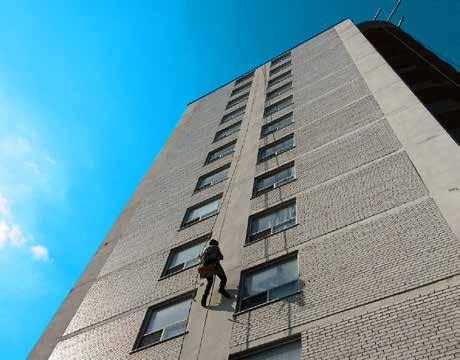
Garage & Balcony Assessment/Restoration
Building Cladding Design, Assessment & Remediation
Roofing System Design, Assessment & Remediation
Reserve Fund Studies
Performance Audits
Energy Audits and Modelling
Structural Engineering
Safe Buildings is led by Jason Reid, senior advisor for fire and emergency management with National Life Safety Group, and Aamer Merchant, a police professional with a strong technology background. Merchant says that embracing innovative technologies is crucial in today's resourceconstrained environment where vertical living is becoming more prevalent in urban settings.
“By adopting responsive technologies, governments can fulfill their commitments to serve their residents effectively while also safeguarding both citizens and emergency responders,” Merchant says. “It's not just about keeping pace with the times, but also staying ahead to meet the evolving needs of communities.” 1
Quintin Johnstone is CEO of Riskboss Inc. and a former Toronto police officer. For more information on articles like this, or to answer any question on risk identification/mitigation, visit www.riskboss.com.
For more information on Safe Buildings technology visit: www.safebuildings.ca
Whiterose Janitorial Services Ltd. specializes in high-quality industrial, condominium and commercial cleaning and superintendent services. Founded as a small, family-run Canadian business in 1986, our professional cleaning services company has grown into a multi-faceted business providing a full range of quality cleaning services across Canada.

• Fully Customized Schedules
• Janitorial Services

• Floor Cleaning
• Window Cleaning Services
• Carpet Cleaning
• Garage Cleaning
• Pressure Washing
• Floor Polishing
• Construction Cleaning
• Stripping and Waxing
SUPERINTENDENT SERVICES
• Emergency Services/ On Call
• Live-in and Live-out Services
• Daily Readings
• Generator Tests

• Small Repairs
• Mechanical Systems
• Garbage Disposal Services
• Pool and Hot Tub Services
condo corporations and individual unit owners are taking advantage of easy-to-access technology and implementing additional security features for the common elements and units.
An increasing use of security cameras in and around condo communities has come with more questions and issues condo boards, property managers and condo lawyers are forced to deal with. The installation of security cameras raises numerous legal issues under the Condominium Act, the Criminal Code and privacy legislation.
Below are some of the most common questions I’ve been answering over the past year, which can provide a starting point to engage in further investigation. As every condo corporation and its governing documents are not identical, it is advisable to seek further legal advice about your specific situation.
Can a condominium corporation install security cameras on the common elements?
Yes, condo corporations can install security cameras on the common elements. One of the duties of the corporation is to manage the safety and security of the common elements and persons that enter the property. Security cameras can help with fulfilling this duty. However, before a board decides to install cameras, they need to clearly identify what the purpose of the cameras are and determine if there is a less intrusive method that would meet the needs of the corporation.
In addition, it is very important that corporations establish policies regarding surveillance and privacy. These policies, at a minimum, should cover issues such as:
• Purpose of surveillance;
• General location of cameras;
• Types of personal information that will be captured;

BY SONJA HODIS

• Who has access to surveillance and who will review it;
• How will surveillance be stored and for how long;
• Process for requests for access to surveillance;
• How owners and residents will be advised of any changes or expansion of camera locations; and
• Process for responding to privacy breaches.
There will be some common element areas, such as washrooms and change-rooms, where there will be a higher expectation of privacy than a hallway or garage. There will be few if any legitimate reasons for installing cameras in such areas. Wherever cameras are installed, it is imperative that clear signage is posted giving everyone notice that surveillance is in place. It is also important to remember that no cameras should be directed at any one unit and they should not capture the inside of units when the doors are opened.
Do condominium corporations have to get owner approval to install security cameras?
Section 97 of the Condominium Act deals with situations where a condo corporation makes changes to the common elements or assets. Under s. 97 (2)(b), a change such as installing security cameras would not require notice to the owners if the purpose of installation is for the safety and security of the property and persons using the property. If the installation is for some other purpose, then a more careful review of s. 97 and a discussion with your condo lawyer would be prudent to determine whether or not notice and/or a vote is required. However, even if you are not required to give notice to owners in advance of installing the cameras, it is always important to give notice once they are installed. It is important that you post signage, which indicates to owners, residents and anyone visiting the property that there is surveillance in place. In addition, when giving owners and residents notice of the installation of the cameras, do not forget to share your surveillance and privacy policy with them.
Can owners install security cameras?
It depends where the owners are installing the cameras. There will likely not be an issue if the owner is installing the camera within their unit; the images captured are of the inside of the unit only and the owner is not making any changes to the common elements as a result of the installation. However, if owners are installing cameras (such as doorbell cameras) on the outside of their units or are making changes to the common elements in order to install a camera, s. 98 requires that they get approval from the board and enter into a s. 98 agreement.
If boards are contemplating allowing owners to install cameras on the outside of the front doors, the board should consider developing a policy and set of conditions that must be followed with respect to this type of installation. Door cameras raise privacy concerns as they tend to capture images and/or sounds that take place on the common element hallways, walkways etc. They may also capture images/sounds from other units within the vicinity of the camera.
As such, when giving owners approval for this type of installation, be mindful of the images and sounds that may be captured by the device being installed. Ensure that the privacy rights of others are not being violated before approval is given. Many condo corporations have banned the installation of door cameras for this very reason. If the board is considering banning door cameras, you will want to amend your governing documents to do so.
Can the security footage capture private conversations or just images?
It is important that any security camera the owner or corporation installs captures only images and not conversations. The recording of private conversations is an offence under Section 184 of the Criminal Code of Canada when the person making the recording is not a party to the conversation.
There are exceptions to s. 184, such as a warrant is obtained authorizing the capture of the private conversation as in the cases of wiretaps. Corporations and owners should seek legal advice if they intend to record private conversations. In most situations involving the corporation’s or owner’s security cameras, the exceptions will not be applicable. As such, it is recommended that audio recording options should be shut off for any cameras the condo corporation or owners install.
Can owners access security footage from the corporation’s cameras?
Owners should not have automatic access to security footage. The corporation’s policy regarding cameras should clearly state who has access to the footage and if someone wants access to the footage, the procedure that must be followed.
Recently, I had a case where an owner was injured as a result of the actions of another owner on the condo property. The incident was captured on the security cameras. The owner who was injured wanted a copy of the surveillance footage as he had commenced a claim against the other owner.
















In this type of situation, the proper procedure is to advise the owner (or their legal counsel) requesting the footage that they must obtain a court order requiring the corporation to release the footage. It is a common procedure in civil claims to get court orders for third party records. A court order protects the condominium corporation, the board and property management from any allegation that the footage was improperly released.
Although you should not hand over the footage unless a court order is obtained, it is important to make sure when such a request for the footage is made that you preserve the footage in its original, unaltered format in a safe location. Many security systems will overwrite footage every certain number of days. You want to make sure that the footage is not overwritten and it is preserved in case the court orders you to release it.
Does a condo corporation have to hand over security footage to the police?
During a police investigation it is not uncommon for the police to ask property management or the board for video surveillance footage that has been captured on the corporation’s cameras. While you may want to assist the police in their investigation and be cooperative, it is important that when you are faced with such a request, you ask the police to obtain a warrant. Once the warrant has been obtained, it would be wise to have your condo lawyer review it before any footage is handed over to ensure the footage complies with the terms of the warrant. In addition, once the request is made, ensure that you preserve the footage in its original format in a safe
location in case the court orders you to hand it over to the police.
Can the board or property management give police permission to install police cameras on the common elements for the purposes of an investigation?
No. If the police request permission to install cameras on the common elements for the purposes of investigation, the board and property management should advise the police that they will cooperate once the police get an order from the court authorizing same.
Are surveillance recordings considered “records” under the Condo Act that could be subject to a records request by an owner?
Video surveillance could be considered a “record” under the Condo Act (the Act) and subject to a records request. As with any records request, it is important to remember that section 55(4) of the Act will apply and there may be situations that fall under the s. 55(4) exemptions, which would prohibit disclosure.
Although video surveillance is not a record that a condo corporation must keep under s. 55
of the Act, that does not mean it is not a record if it is created. A 2022 CAT decision (Kent v. Carleton Condominium Corporation No. 268) held that a record of the corporation is something that is created and maintained by the corporation for a purpose that is related to the ongoing role of managing the corporation. Video surveillance could fall into this category. In the Kent case, which involved the recording of an owner’s meeting, the CAT held that although there is no obligation to create the recording, by choosing to create it and retain it, the corporation makes the recording a record under the Act and subject to an owner’s right to access and examine the record in accordance with s. 55. The same analogy could be applied to surveillance recordings.
In addition, a 2020 CAT case (He v. Waterloo Standard Condo Corp No. 541) ordered on consent that video surveillance be disclosed under a records request. The condominium corporation did not oppose the disclosure of the record, which was not surprising as the video footage supported their allegations that the owner or their tenants violated the rules. I am unaware of any CAT case to date in which the corporation refused to release video footage when requested by the owner and the CAT ordered it released.
As condo corporations are permitted under s. 55(1)(12.) and 55(2)(3.) of the Act to stipulate additional records they must keep in their bylaws and for how long these additional records will be kept, a board may want to consider amending their bylaws to include video surveillance as a record of the corporation in order to be able to manage this type of record and to specify how long the recording will be kept.
Any provisions in the bylaws should align with the surveillance and privacy policy created by the board and with the practical realities of the equipment and software used to record and store the surveillance footage. 1
Sonja Hodis is a condominium lawyer as well as an independent arbitrator and mediator for condominium disputes. She advises condominium boards and owners on their rights and responsibilities under the Condominium Act, 1998 and other legislation that affects condominiums. She represents parties at all levels of court, various Tribunals and in mediation/arbitration proceedings. She also acts as independent mediator or arbitrator helping parties resolve disputes or rendering decisions when they cannot. Sonja can be reached at (705) 737-4403, sonja@ hodislaw.com or via her website at www.hodislaw.com.
This article is provided as an information service and is not intended to be a legal opinion. Readers are cautioned not to act on the information provided without seeking legal advice with respect to their specific unique circumstances. Sonja Hodis, 2024 All Rights Reserved.














































Lessons from the Khraplyvyi Case highlight the critical importance of condo security and the challenges property managers face with maintaining order in residential communities.
Last
year, community
holders, including the Association of Condominium Managers of Ontario (ACMO), the Canadian Condominium Institute (CCI), and the Community Associations Institute (CAI), called on the Ontario government to enact legislative reform and allocate more funds in order to improve the protection of all parties within condominium communities.
However, new regulations have not been implemented yet, and communities have been left to safeguard themselves against harassment and violence. This has resulted in condominium directors resigning, not running for election (or re-election), or avoiding the enforcement of rules due to safety concerns. Fortunately, successful outcomes can be achieved, if these issues are tackled strategically and preventative measures are put into place.
The Khraplyvyi case
In a recent case, Toronto Standard Condominium Corporation No. 2715 v. Khraplyvyi, a condominium found itself at the centre of a significant security challenge posed by a resident. This case highlights the inherent risks involved in maintaining a safe and harmonious living environment for all residents.
The case revolves around multiple incidents of disruptive and threatening behaviour exhibited by the son of a condominium owner over
BY LUIS A. HERNANDEZ AND INGRID KULIK


the course of a couple of years. The son’s actions included yelling and screaming at residents and staff, refusing to comply with security requests, and engaging in potentially dangerous activities, such as obstructing fire safety inspections and using inappropriate language and gestures towards female residents.
These behaviours culminated in the discovery of a disturbing note in the condominium's parking garage, which contained graphic












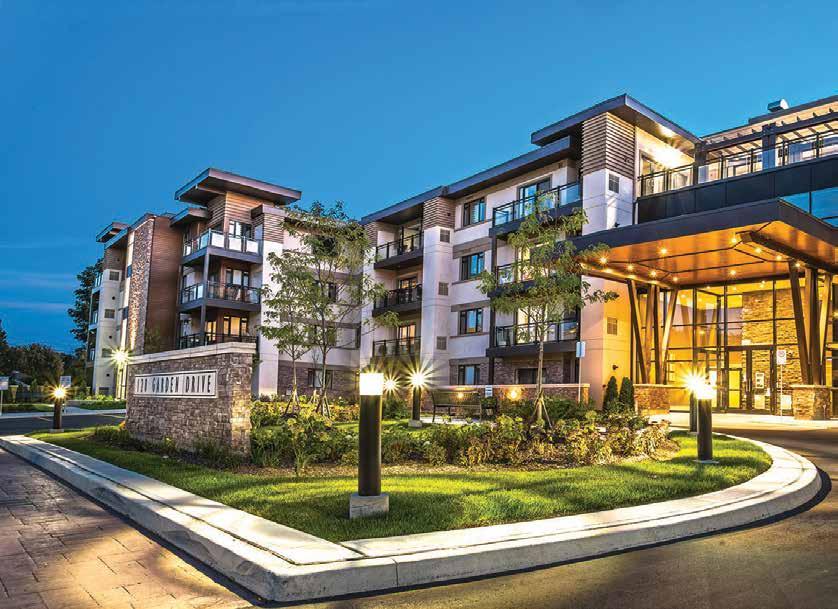

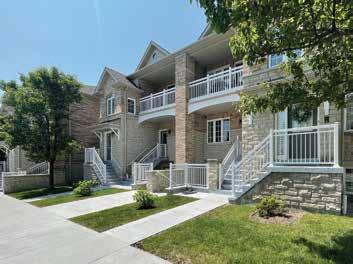

threats of sexual violence and derogatory language towards management and other residents, in addition to images of the Russian “Z” symbol representing the military invasion of Ukraine.
The Khraplyvyi case underscores several legal and safety implications for condominiums and property managers:
the door to the unit after the police forcibly entered, adding further to the expenses. In total, the corporation incurred security-related costs amounting to $54,624.30.
The court ultimately awarded the condominium the complete amount it incurred in security costs plus legal costs in the amount of $39,805.38. Meaning, in total, the respondent owner and son were jointly ordered to pay the condominium $94,429.68.
advisers. Additionally, condominiums can look to different communities for insight and practical implementation of ideas that have worked elsewhere.
Work on Conflict Resolution Skills: All community stakeholders ought to work on improving their conflict resolution skills and learning how to de-escalate situations. This is true not only for managers, but also for directors.
Compliance with the Law: condominiums must ensure that all residents comply with the Condominium Act, 1998, declarations, bylaws, and rules. This includes taking reasonable steps to address any behaviour that may cause damage, injury, or interfere with other residents' enjoyment of their property.
Workplace Harassment and Violence: The case highlighted the issue of workplace harassment, particularly when residents' actions impact workers. The Occupational Health and Safety Act defines harassment as any vexatious conduct or comments that are unwelcome. In this case, the son’s behaviour towards the management staff can only be characterized as workplace harassment and violence.
3 1 2
Financial Accountability: This ruling reinforces the principle that residents who violate condominiums’ governing documents can and should be held financially accountable for the consequences of their actions.
The cost of prevention – who is responsible?
Disputes between an owner and a condominium’s agents, individual board members or between owners themselves, certainly comes at a hefty price for the corporations, whether it’s legal costs, administrative or soft costs (e.g., tracking, recording, and expending time and efforts to curb a dispute).
In response to the unwelcome actions by the unit owner’s son, TSCC 2715 was compelled to take extensive security measures. These included hiring additional security guards at a cost of over $31,000, installing more closed-circuit television (CCTV) cameras for approximately $17,000, and conducting a security assessment costing $5,400. Additionally, the condominium had to repair
This case serves as a crucial reminder of the importance of robust security measures in condominiums. Condominium boards and managers must be vigilant and proactive in identifying and mitigating risks to ensure the safety and well-being of all residents and workers. Key takeaways include:
Early Intervention: Prompt action can prevent situations from escalating. Regular monitoring and addressing minor infractions early can deter more serious violations and will generally set an expectation in the community that issues will be dealt with (i.e., residents cannot get away with this type of conduct).
Documentation and Proof: In such cases, it is pivotal to document any interactions with the wrongdoer and establish clear boundaries to avoid any misunderstandings. If at all possible, avoid interacting with these individuals by phone.
Comprehensive Security Plans: Investing in comprehensive security systems, including CCTV, security personnel, and regular assessments, is essential. These measures not only enhance safety but also provide valuable evidence in case of disputes. Connect with your security and concierge service providers to carry out a comprehensive security audit or highlight the “hotspots” or “problem areas”.
Resident Education: Educating residents about the importance of security and the consequences of non-compliance can foster a cooperative community environment. Clear communication and reminders regarding the existing rules and, their legal obligations with respect to the condominium’s governing documents can help set expectations and reduce conflicts.
Policy Implementation: Complaint response and harassment policies can be implemented by condominiums in consultation with their property management service providers, legal counsel, and other professional
• Listening: often individuals simply want a chance to express their frustration or explain a situation that is causing them distress.
• Remain professional: angry responses to an angry resident will not de-escalate a situation. It is important that people in these situations understand the value of remaining calm and collected.
• Suggest solutions: offering to solve a problem may ease tensions.
• Follow through with promises: it is vital that stakeholders stay true to their word and, when promises are made, that they are kept.
The Khraplyvyi case illustrates the complex challenges property managers face in maintaining security and order within residential communities. It also underscores that while the costs of security improvements and prevention may be significant, the price of neglecting it can be far greater. It is also worth recognizing the important role that property managers have in reducing the risk of conflicts and protecting themselves from potential harm or legal action.
By reflecting on this case, boards and property managers can learn how to take proactive steps to safeguard their properties and communities. They can also look to it as an example that wrongdoers can ultimately be held accountable, even if the journey is challenging. 1
Luis A. Hernandez is a condominium lawyer with Levitt Di Lella Duggan & Chaplick LLP in Toronto. He services condominiums across Ontario with all their solicitor and litigation needs. He is also a frequent speaker at industry events and contributor to industry publications.
Ingrid Kulik, RCM, CMCP is a condominium manager with Icon Property Management Ltd., providing full-service property management services in the Greater Toronto Area.

Dec 4 - 6, 2024
Metro Toronto Convention Centre
by Peter Altobelli, vice president and general manager, Yardi Canada Ltd.
The Canadian condo and strata market is undergoing a period of transition. While the recent Canada Mortgage and Housing Corporation Housing Supply Report showed a rise in apartment construction, including condos, in major cities like Toronto and Vancouver in 2023, concerns are mounting. Ongoing supply chain issues and rising interest rates are expected to moderate condo starts in 2024. This shift coincides with a growing population and labour drought, prompting questions about how condo corporations will adapt. How will they accommodate the needs of a larger resident base while maintaining the value of their condominium units?
Technology offers a compelling solution.
Robust software solutions are emerging to streamline financial processes for condo corporations. Imagine generating accurate financial statements, effortlessly tracking operation budgets and managing complex reserve funds and reporting – all with a few clicks within one platform. This is with the support of automating routine tasks such as recurring payments, fee postings, and calculating and applying fee increases for special assessments and more. Eliminating the need for spreadsheets and ensuring financial data is always up to date. Additionally, these solutions can streamline invoice processing with approval workflows, freeing staff from tedious data entry and reducing errors. This newfound efficiency allows them to focus on strategic initiatives that directly benefit community and the overall success of the corporation.
Technology can bridge the communication gap between condo owners, board members and tenants. A central mobile app or online portal offers features that improve satisfaction among the group. Features like online access to important documents, the ability to submit payments and manage accounts, and amenity booking streamline owner and tenant interactions. The app can also function as a virtual concierge, offering features like package tracking, in-suite deliveries, and visitor notifications. For property managers, the app automates manual tasks like tracking each corporation's by-laws, enforcing violations, sending announcements and managing
maintenance requests, freeing up time and resources. Ultimately, a well-designed portal fosters engagement, transparency, and a stronger sense of community within the condo building.
Paper-based processes for board member profiles, unit history, annual general meetings and status certificate purchasing can be a burden for both owners and property managers. A secure online portal streamlines data management for condo corporations, offering a win-win for all involved. This system replaces slow mail delivery with instant information retrieval, boosting efficiency and accessibility. Administrative costs plummet as printing, mailing, and storage become obsolete. Data transparency is enhanced by ensuring consistent access to standardized information across properties. By offering real-time updates everyone is kept informed of any financial or legal changes.
The Canadian condo market is at a crossroads. While challenges exist, technology offers a powerful path forward. By embracing robust software solutions to manage properties, accounting, owners and maintenance, condo corporations can not only navigate the current climate but thrive in the years to come. To get all your technology questions answered, visit yardi.com/condo.
To learn more about your marketing technology options, visit reachbyrentcafe.com.

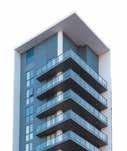














































Cleaning contracts in commercial and condominium settings are arguably one of the most difficult to satisfy. Where cost and visual impact are the proportionally dominant factors in choosing a service provider, expectations from property management understandably run high. Savvy cleaning and maintenance companies are looking to technology to heighten their ability to service and provide for their clients. As the importance of environmental sustainability becomes increasingly recognized, many companies are also striving to integrate eco-friendly practices into their operations.
A big challenge in the condominium sector is the diversity of needs across a variety of buildings and communities. Unlike commercial properties, where environmental standards like LEED and BOMA certifications are well-established, condominiums often lag in adopting sustainable practices. This presents a unique opportunity for service providers to educate and influence condo boards and property managers about the benefits of eco-friendly solutions.
According to Andrew Hood, Vice
President of Innovation
Building Maintenance, the goal is not only to provide cleaning and construction services but also to improve environmental, social, and governance (ESG) standards across their operations.
“We can shift the narrative from simply hiring a cleaning service to choosing a partner committed to environmental stewardship,” he explains. “This approach is particularly relevant for condominium boards and property managers, who may not yet prioritize sustainability as much as their commercial counterparts.”
Innovation is also a leader in using technology and industry standards to provide a better service. One of the standout innovations is their use of the Mero system, a cutting-edge technology that tracks and optimizes employee tasks. This system uses Bluetooth beacons placed in wall outlets to scan cleaners’ fobs, providing real-time data on their location and activity. This not only ensures that tasks are completed according to schedule, but also enhances transparency and accountability. Additionally, this data can be used to refine cleaning routines and improve overall service quality.
“With Mero, we’ve seen an active increase in our growth potential with new customers and security in supporting existing contracts. We had a problem at one of our sites where cleaners were not following their routine. Mero’s technology allowed us to highlight the exact areas where cleaners were spending time and changed the dynamic of the property. We can now offer an improved quality of services,” Hood explains.
Another exciting development is the use of robotic vacuums and scrubbers. While these are currently more suited to open commercial spaces, the technology is rapidly developing. The company is at the forefront of these advancements, piloting new robotics and integrating them into their service offerings as they become viable for residential use.
Water conservation is another critical area where Innovation Building Maintenance has made significant strides. “We’ve teamed up with a company to reduce water usage consumption in buildings by replacing standard urinals with waterless urinals,” says Tahsin Bondokji, President of Business Development. “This is new patented technology which we’re excited to offer to our clients.”

awarded a bronze medal. That’s something we’re very proud of.”
Additionally, Innovation Building Maintenance employ ionized water for cleaning, eliminating the need for harsh chemicals while still delivering effective results. This method involves charging water molecules to create a potent cleaning agent, a technology that is both innovative and environmentally friendly.
This approach is particularly relevant for condominium boards and property managers, who may not yet prioritize sustainability as much as their commercial counterparts.
Using HEPA-filtered vacuums with low sound decibels to reduce noise pollution and improve indoor air quality, their attention to detail underscores a holistic approach.
To date, Innovation has deployed waterless urinal facilities in major shopping centres across Canada, including Yorkdale and Scarborough Town Centre. The urinals significantly reduce water consumption, showcasing a practical application of sustainability in high-traffic areas. This technology is now being considered for residential buildings, further bridging the gap between commercial and residential sustainability practices.
Third-party auditors like EcoVadis and Green Seal certify all chemicals used by Innovation as safe, ensuring minimal environmental impact.
“EcoVadis is the world’s largest third party ESG auditor,” Bondokji says. “In our first year of being audited, we were
Innovation Building Maintenance has also partnered with Veritree to establish a tree planting initiative aimed at reforesting areas affected by wildfires. Since its inception in 2023, a total of 20,571 trees have been planted in British Columbia. Such programs not only offset the company’s carbon footprint but also engage the community.
By educating board members and property managers about the benefits of these initiatives, Innovation is helping to drive a cultural shift towards more sustainable living. Their thorough approach incorporating advanced cleaning methods, water conservation, and cutting-edge tracking systems, positions them as a frontrunner in the industry.
To learn more, visit www.innovationmaintenance.com


Developers of residential buildings, whether condominium or low-rise “freehold” homes, have faced significantly increased numbers of purchasers not closing their deals due to the inability to obtain financing, even where significant deposits have been paid to the developer. This is particularly the case for homes sold at high prices at peak market (particularly in late 2021 and early 2022).
BY RACHEL PUMA


We are not seeing as many defaults on high-rise condominiums due to the longer build period. High-rise condos closing today were likely sold 4 to 5 years ago when the market was not at a peak, whereas highrise condos launched at peak will likely not close until 2025/2026 or later, at which time the market and prices are expected to have rebounded.
As we work through the various deals in which purchasers are unable to secure sufficient financing as a result of low appraisals, there are a number of strategies for developers to mitigate the risk of purchasers defaulting.
Most purchase agreements allow developers to require proof of purchaser financing: the purchaser has either available cash or a mortgage pre-approval for the sale price, fail-
ing which, the vendor can terminate the deal. Developers should obtain this information when accepting agreements, and request periodic updates to ensure the purchaser’s financials have not changed.
As closing dates approach, obtaining preapprovals with a long enough rate hold (if possible) reduces last-minute surprises where a purchaser is unable to secure financing. Many purchasers themselves will not realize they cannot obtain financing until it is too late to find alternate arrangements.
Similarly, educating purchasers about closing expectations is an important mitigation strategy. Purchasers frequently do not take into consideration the extent of adjustment costs on closing and/or whether they are eligible for the HST Rebate (which, if not eligible, that amount is added to the sale price). Although it is the responsibility of the
purchasers and their lawyers to understand these items, developers can help avoid lastminute surprises by emphasizing these items early on.
Even where the above strategies are deployed, purchasers may not be able to come up with adequate funds to close on the closing date. In that case, many developers have been working in good faith with purchasers to keep the deal alive, most often, by permitting extensions to the closing dates in order to give purchasers time to come up with the shortfall of funds.
Developers may also allow assignments in these cases, provided they are not in competition with their own inventory units. These assignments are difficult when sufficient financing is unavailable for the sale price or if other homes in the project are lower in price; however, pur-
chasers may be able to assign at less of a loss than their loss on a default.
Developers’ remedies on a purchaser default
It should go without saying that purchasers have no right to demand a price abatement or any change to the terms of the purchase agreement. In this author’s opinion, purchasers would not expect to pay more for the property if market prices increase; likewise, it is unreasonable to expect developers to accept less than the agreed upon price as a result of sale prices decreasing.
A recent Ontario Superior Court case dealt with a failed real estate transaction from early 2022. In the case of Zoleta v. Singh and RE/ MAX Twin City Realty, 2023 ONSC 5898, the purchaser received an appraisal for a lower value of the property than agreed upon in the purchase agreement, and advised the vendor that the purchaser “require[d]” an abatement for the difference in value. The vendor did not agree, and ultimately the purchaser failed to close on the closing date.
In this case, the purchaser asserted bad faith on the part of the vendor. The Court found that the vendor did not act in bad faith, nor had an obligation to agree to change the terms of the agreement. The Court instead re-iterated that a party to a real estate transaction may, in the absence of any bad faith, insist on strict compliance with the agreed upon terms of the contract. The Court also found that the purchaser unequivocally communicated its intention not to complete the transactions in accordance with its terms by its lawyer stating that it “required” an abatement to close the transaction, which amounted to a repudiation of the contract.
Where a purchase agreement is terminated as a result of a purchaser’s breach, the vendor is normally entitled to keep the purchaser’s deposit, which is credited towards any damages suffered by the vendor as a result of the breach.
The seller is entitled to damages for the difference between the purchase agreement sale price and the re-sale sale price, plus any reasonable additional costs
incurred to re-sell the home (less the amount of the purchaser’s forfeited deposit). Other costs may be additional legal, realtor, or other professional fees incurred, and interest, realty taxes, and other costs associated with the purchaser’s breach.
At the end of the day, purchaser defaults are happening and will continue to happen. However, developers are well within their rights not to agree to an abatement of the purchase price, even in a volatile real estate market; and purchasers will be held responsible if they do not comply with the deals they made. 1
Rachel Puma is a partner at Robins Appleby LLP. She provides advice on all primary areas of commercial real estate law, including acquisitions, dispositions, development, financing, and leasing. She represents a variety of clients from financial institutions in significant financing transactions, to small local business landlords or tenants, and everywhere in between. Email: rpuma@robapp.com Website: https://www.robinsappleby.com

















The BOD Program is creating a new standard for Building Operations professionals through current, relevant, engaging, and interactive training content with ongoing insights and information through continuing education, special events and direct access to industry subject matter experts. In tandem with the commercial real estate industry and over 325 recognized subject



















The BOD Program is online, self-paced and includes a robust, ongoing continuing education component. For more information, please visit: BODProgram.com matter experts, we are proud to offer the BOD Program and its 22 certificates to all Building Operations professionals. Over 500 operations professionals have already registered and many have attained their Water Treatment Systems certificate.












If you and your staff are interested in registering for the BOD Program, please contact Chuck Nervick at: chuckn@mediedge.ca or 416-803-4653 Proudly Developed and Delivered by:




A new book, Condo Questions and Answers, shares advice about the intricacies of living in a condo.
Sally Thompson, a founder and managing principal of Synergy Partners Consulting Limited and newly appointed president of the Canadian chapter of Community Associations Institute, addresses the most common and unexpected problems facing firsttime owners and long-time residents.
Her book is backed by years of experience as a professional engineer and a history of advising owners, property managers and boards..
She has also extensively consulted with the government on amendments to the Condominium Act and previously served as president for the Toronto Chapter of the Canadian Condominium Institute.

Her four-part book, published by James Lorimer & Company, breaks down questions related to everything from water leaks
and noisy neighbours to understanding condo mortgages. A crucial focus related to reserve funds tackles the likeliness of fee increases, special assessments, and how to determine if your condo is in good shape financially, and much more.
She explores how the future of Ontario condominiums remains precarious without proper funding of reserve funds and remains dedicated to helping the industry get to a better place.
“Condominiums are very complex, and many owners don’t understand as much as they should,” she says. “Writing the book gave me the opportunity to crystalize my thinking, and hopefully share the content with a wider audience.
“I have also been advocating on behalf of condominiums for more than a decade to have improvements made to the Condominium Act to improve financial stability from day one in the life of a condominium. I hope that my book helps more people understand why this is important so their voices can join in.”

Oshawa developer Minto was named Green Builder of the Year (low-rise category), by the Building Industry and Development Association (BILD).
The developer also won Project of the Year for its work on The Heights of Harmony in north Oshawa. Phase 1 of the project is nearing completion at 75 per cent and expected to finish this year. Construction and sales for Phase 2 are currently underway with occupancy beginning by year’send.
The project won for a few reasons. Builders aim to preserve the natural surroundings to foster biodiversity and outdoor access for residents. Each townhome will get the ENERGY STAR for New Homes certification to be approximately 20 per cent more energy-
efficient than standard homes. A high-performance envelope will reduce the need for heating and cooling and maintain a comfortable indoor temperature year-round.
Vince Santino, vice-president of development, says developers and homebuilders play a crucial role in shaping communities and their quality of life.
“At Minto Communities, we think about how our work today will impact current and future generations,” he says. “From our innovative community geoexchange energy system at OakVillage to our Net Zero Ready and multi-generational homes in Heights of Harmony and Union Village, sustainability and quality of life guide every aspect of our communities. By keeping innovation top of mind, we can all lead the way toward healthier, more vibrant communities that thrive for generations.”
Other condo-related awards went to Tridel, for Green Builder of the Year in the mid/high-rise category and Lily At Crosstown by Aspen Ridge Homes for Best Mid-Rise Building Design. Tridel and RioCan Living’s The Well won for Best Community, Built.
Windmill Development Group has been named a Global Leader under the One Planet Living (OPL) framework, securing a rare distinction seldom accorded to a corporate entity. The newly bestowed status recognizes Windmill’s alignment with OPL’s10 principles for social fulfillment with minimized environmental impact, its record of developing sustainable residential and mixed-used projects and its role in fostering impact investment in real estate.









































